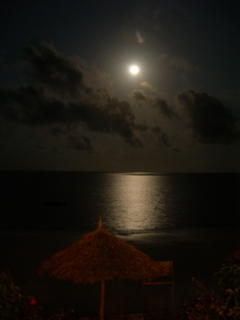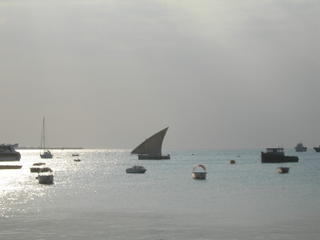Medicine in Tanzania
It has been a difficult week on the medicine service at Muhimbili Hospital, Tanzania’s largest hospital. I’ve been doing rounds with the medical team every Tuesday and Friday morning for the past three weeks. It’s generally similar to medical rounds in the States. Our team consists of a 1st year resident, called an ‘intern’, a 2nd year resident, called a ‘registrar’, a supervising physician, and myself. We spend about 5-10 minutes at the bedside of each patient. The intern or registrar presents the case by giving a 1-2 minute overview. Then, we’ll ask the patient additional questions, discuss the case, and decide on a diagnosis and plan of action.
The medicine practiced here is quite different from the medicine I’d learned in Seattle. Not only are many of the cases and diagnoses different (many things here we don’t see in the US), but also the ability to work up the patient is limited, particularly with laboratory tests. Basic laboratory tests takes about 3 to 5 days from the time the sample is taken to the time the results are returned to the doctor. Similar lab tests in Seattle would take about 3-6 hours, depending on the test. The supervising physician recently said, “There is little point to getting serum electrolytes when it takes 3 days for the results to return. What would you do with the results at that point?” Electrolytes are routinely drawn each morning on hospitalized patients in the US, so corrections can be made rather quickly.
The physical conditions in the hospital are dilapidated, to say the least. The medicine ward is a row of beds along a long wall of open windows. None of the windows have screens and most of them having missing panes of glass. The beds are about 2 feet apart with a thin mattress and bloodstained sheets. There are no electricity outlets, oxygen tanks, or monitors. A basic ‘pulse-ox’ machine (measures pulse and oxygen saturation) is simply not available. The only piece of equipment they have is a sphygmomanometer, to measure blood pressure. In addition, patients are required to pay for their lab tests and some basic medications. A patient must rely on relatives to bring food, but there is a back up plan if patients don’t have any visiting relatives. I’ve already concluded that having a relative who visits the patient is probably the patient’s best prognostic factor.
This week we had a particularly difficult case. On Tuesday, our first patient had a distended abdomen and was clearly in a bit of distress. She was an older diabetic with signs of diabetic retinopathy (some mild blindness), and we thought she was probably in acute renal failure. I mentally ran through the series of lab tests we might order in Seattle. Then, I realized none of these lab tests would be completed quickly, and we shouldn’t wait 3 to 4 days for lab results with this patient. There is no intensive care unit in Tanzania. In order to manage this patient properly, we need to know the status of her kidneys, liver, and pancreas, at least, all of which require lab tests. We probably looked somewhat befuddled, because she looked up at us and said, “so what are we going to do next?” An ultrasound of her kidney would take days and dialysis of her blood was not even an option. We gave her more fluids and ordered the lab tests.
Friday morning the first bed was empty. “She died on Wednesday”, the registrar said. “Did you get the lab results?” I wanted to know what happened for when we face this again. “Well, you see, the problem is paying”, he said, “She had no relatives here to pay for the tests”. So this patient, who probably would not have died if she came to the hospital in Seattle, died because the lab couldn’t turn results around any faster than 3 days and because there were no family members to pay for the results. We never had a diagnosis or cause of death for this patient. It was completely unacceptable in my Western opinion.
This patient didn’t need to die. It really wasn’t her turn. The lack of proper medical care and testing, by my team, made her death even worse. I was pissed off and kicking myself the rest of the day. I went through the case over and over in my head trying to figure out what we should have done differently. No tangible answers.
I suppose over the next 9 months I’ll become more comfortable practicing medicine without any short-term lab results. As for now, it’s rather difficult.
paul




